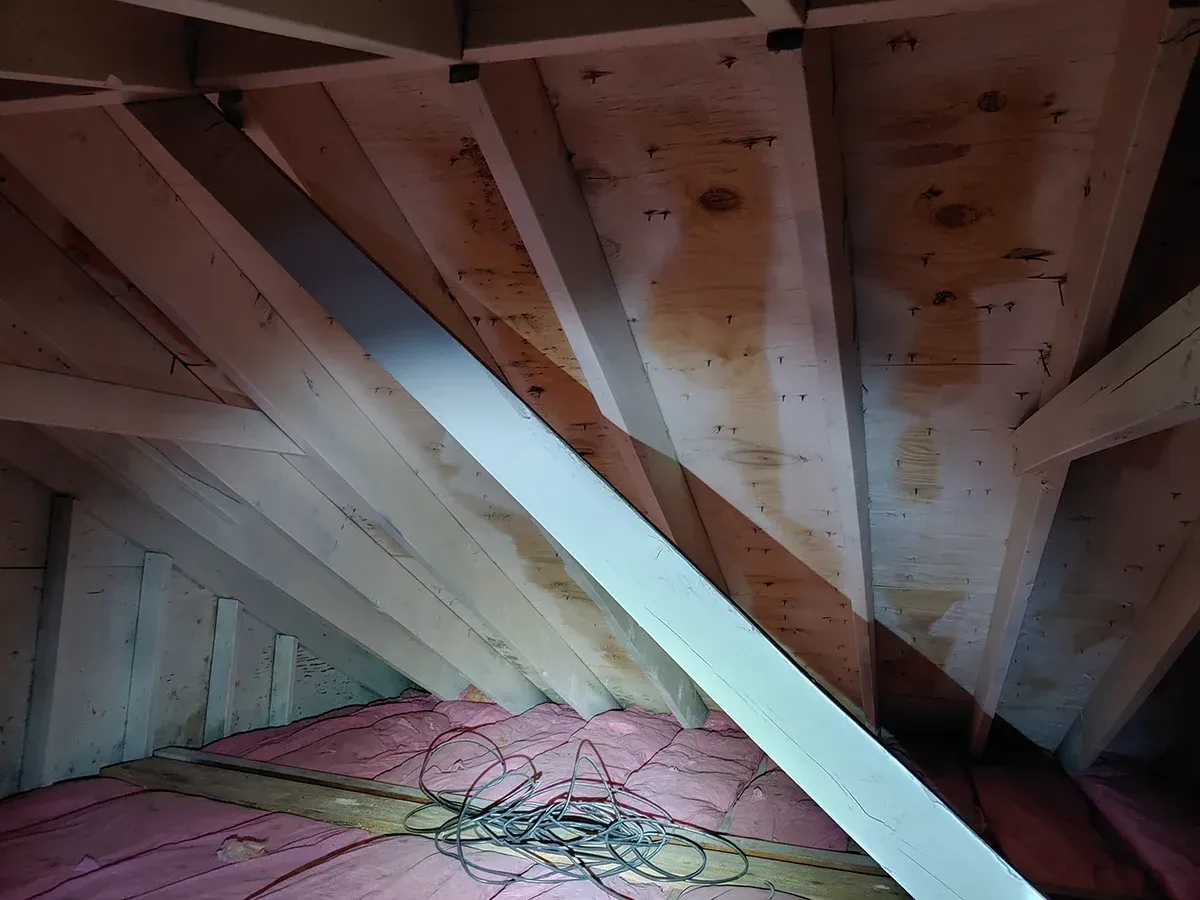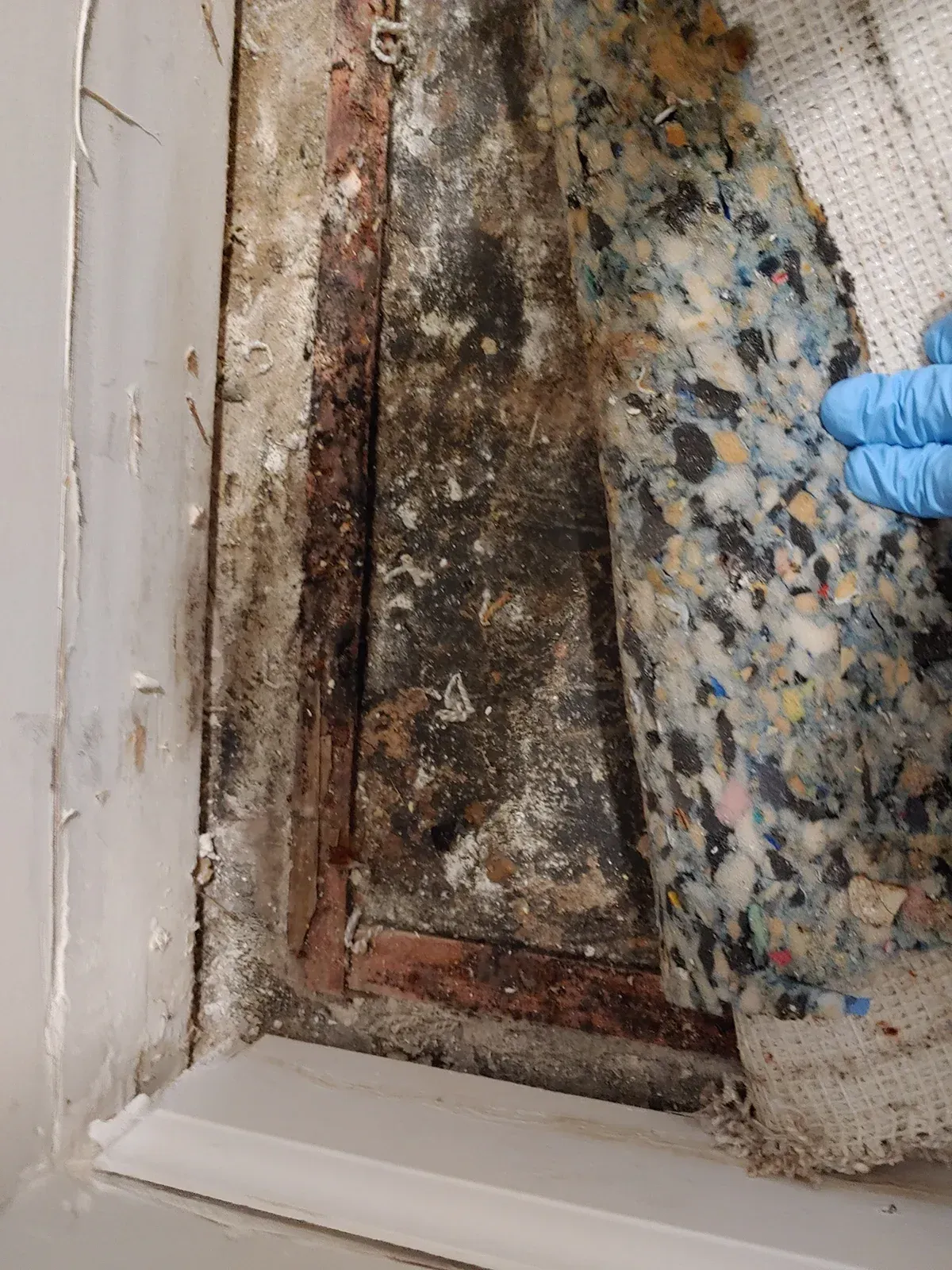High Energy Bills? Your Crawlspace Mold and Moisture Might Be to Blame
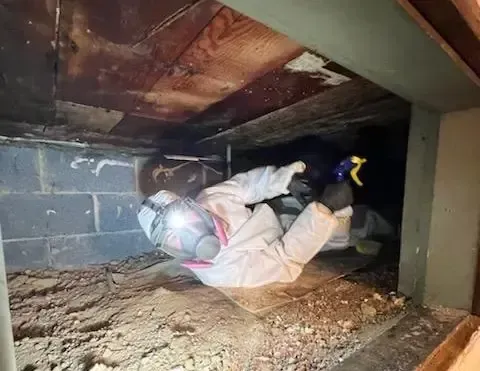
Energy bills in humid Myrtle Beach summers often spike even when air conditioners run almost nonstop. In many coastal houses, the real culprit sits beneath the floorboards in a damp, vented crawlspace. According to the U.S. Department of Energy's Building America program, homes with vented crawlspaces in humid climates often pull in moist outdoor air, which condenses on cool ductwork, insulation, and wood framing. Over time, this moisture saturates materials, promotes mold growth, and forces HVAC systems to work harder. The same research shows that sealing and conditioning crawlspaces can cut heating and cooling energy consumption by 15 to 18 percent.
Best Crawlspace Mold Remediation Myrtle Beach
Persistent crawlspace moisture links three problems that matter most in coastal homes: rising utility costs, declining air quality, and hidden structural damage. A clear picture of how humid air moves through vents and ductwork makes it easier to spot trouble early, from musty odors to sagging floors. Understanding the connection between moisture, mold growth, and energy use turns vague worry into specific, fixable causes. The central claim is simple: treating the crawlspace as a dry, conditioned part of the building rather than a forgotten void can cut energy waste and protect a Myrtle Beach home.
Understanding Crawlspace Mold and Moisture
A crawlspace is out of sight and easily forgotten, but it plays a pivotal role in your home's comfort. In our coastal region, humid air can enter through vents and even small cracks. As the air cools, water vapor condenses on cold surfaces, soaking into wood, insulation, and other porous materials. This steady dampness creates a perfect habitat for mold and other fungi. If your floors are sagging or feel bouncy, if a musty smell wafts up from the floors, or if you notice cracked drywall, doors that stick, or windows that stick, these are often early warning signs of trouble. Cold floors in winter and unexplained spikes in your utility bill can also be red flags that moisture has compromised your crawlspace insulation.
Left unchecked, small moisture problems spread. Mold colonies release spores that drift through floorboards and HVAC systems, infiltrating the air you breathe. Wood framing begins to rot, metal pipes corrode, and pests are attracted to the damp environment. Regular inspections after heavy rains or high humidity help catch moisture problems early. Understanding how humidity enters your crawlspace and recognizing these symptoms empowers you to act before damage escalates.
Signs to Watch For
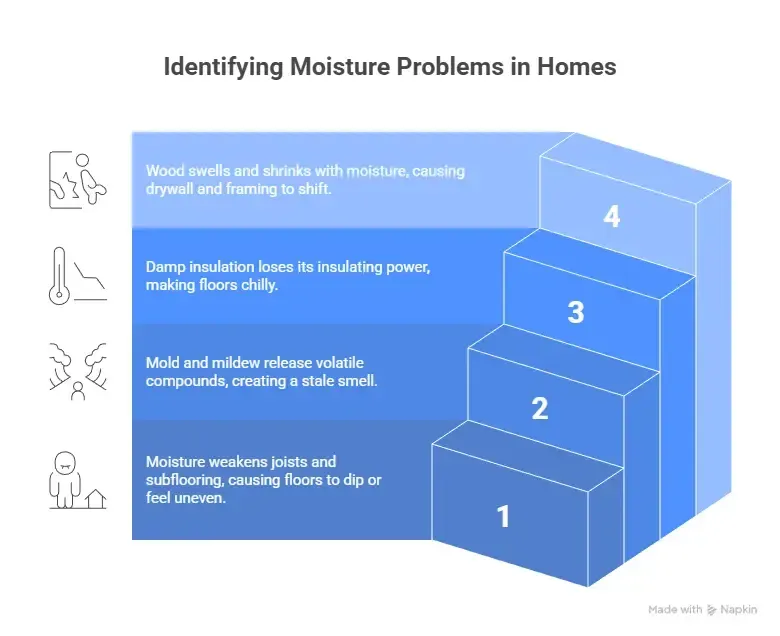
· Sagging or uneven floors: Moisture weakens joists and subflooring, causing the floors above to dip or feel uneven.
· Musty or earthy odors: Mold and mildew release volatile compounds that create a stale smell even if colonies aren't visible.
· Cold floors or rising energy bills: Damp insulation loses its insulating power, making your HVAC work harder and leaving floors chilly.
· Cracked walls and sticking doors or windows: When wood swells and shrinks with moisture, drywall and framing shift, causing cracks and misaligned fixtures.
Why Moisture Raises Your Energy Bills
Moist air holds more heat than dry air, so your heating and cooling systems must work harder to maintain a comfortable temperature. In a damp crawlspace, insulation becomes saturated and loses its ability to slow heat transfer. According to the Building America report, properly sealed and conditioned crawlspaces not only reduce moisture but also cut heating and cooling energy consumption by 15-18 percent. Conversely, vented crawlspaces can draw humid air into leaky ducts, increasing cooling costs by 20-30 percent as unconditioned air is pulled into your HVAC system. When ducts are wrapped in damp insulation, they lose efficiency, so your air conditioner or furnace runs longer, and your utility bill climbs.
Excess humidity also creates a feedback loop. As moisture accumulates, wood and insulation degrade, leading to increased air leakage and heat loss. Your thermostat registers the temperature drop, signalling the HVAC to cycle more frequently. Over time, this can shorten your equipment's lifespan. Addressing crawlspace moisture isn't just about saving a few dollars in winter; it's about protecting expensive mechanical systems and avoiding costly repairs.
Health and Structural Risks
Mold is more than an annoyance-it's a health hazard. The Florida Department of Health warns that babies, children, seniors, and people with chronic respiratory conditions or compromised immune systems are susceptible to health problems from indoor mold exposure. Symptoms can include coughing, wheezing, headaches, skin irritation, and fatigue. When spores travel from a damp crawlspace into living areas, they compromise indoor air quality and may trigger asthma attacks or allergic reactions.
Structural damage is equally concerning. Persistent moisture causes wood to rot and weakens load-bearing beams. Pests, such as carpenter ants or termites, thrive in damp conditions. Over time, sagging floors, warped joists, and damaged subflooring can lead to expensive repairs. Acting promptly to control moisture and remove mold protects both the people in your home and the physical structure itself.
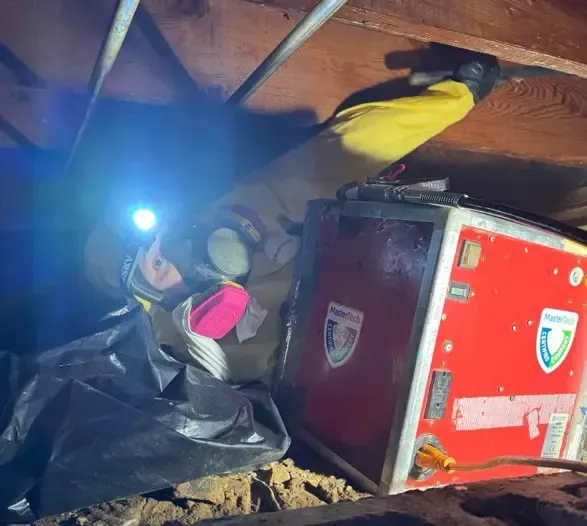
Prevention and Remediation Strategies
Tackling crawlspace moisture requires both immediate cleanup and long-term moisture control. Begin by fixing any plumbing leaks and ensuring that gutters and downspouts direct water away from your foundation. Encapsulating the crawlspace by sealing vents, insulating walls, and covering the ground with a vapor barrier turns this area into a conditioned space, preventing soil moisture and humid air from infiltrating. A dehumidifier designed for crawlspaces can maintain relative humidity between 30 and 50 percent, a range recommended by public health authorities to discourage mold and dust mites.
If you see visible mold covering more than about 10 square feet, or suspect hidden growth behind walls or under insulation, the U.S. Environmental Protection Agency recommends hiring certified professionals. Specialists can safely remove contaminated materials, clean surfaces with detergent and water, dry the area thoroughly, and install moisture-control systems. They also use moisture meters and infrared cameras to identify hidden leaks so the problem doesn't return. DIY cleaning may be adequate for small patches, but larger infestations require expertise and protective equipment.
Protect Your Home and Wallet with Leading Crawlspace Mold Remediation in Myrtle Beach
Crawlspace moisture and mold problems don't resolve themselves. They quietly erode your home's comfort, structural integrity, and your bank account. By learning to recognize warning signs, understanding the link between moisture and energy consumption, and investing in professional remediation and moisture control, you can safeguard your family's health and cut utility costs. Don't wait for sagging floors or sky-high bills to act; have your crawlspace inspected by a certified specialist and take proactive steps to keep it dry.
